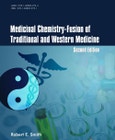Medicinal Chemistry - Fusion of Traditional and Western Medicine is a textbook intended for students taking courses in the various fields of medicinal chemistry, pharmacy, medical and dental programs. Moreover, people working in the pharmaceutical industry and doctors preparing for Medical Board Exams will also find it useful. Since, new drugs are being developed by multi-disciplinary teams; this E-Book describes new paradigms that are emerging in modern biology, biochemistry and medicine. It is therefore a fusion of traditional and western medicine and between systems thinking and reductionist thinking. Readers will learn about how new drugs are investigated, developed and eventually approved by the FDA. The book also includes important information about cGMP, GLP and the FDA regulatory requirements, the importance of environmental toxins, such as bisphenol A (BPA) and perfluorooctanoic acid (PFOAA) in autoimmune diseases and health.
This book offers exceptional value in its descriptions of RNA, epigenetics, toxicology, new drug development, genetically modified organisms and analytical chemistry that cannot be found in other textbooks.
This book offers exceptional value in its descriptions of RNA, epigenetics, toxicology, new drug development, genetically modified organisms and analytical chemistry that cannot be found in other textbooks.
Table of Contents
ForewordPreface
CHAPTERS
1. Introduction
2. Biotechnologies for Medicinal Chemists
3. Developing New Drugs
4. How New Drugs Are Developed: Kinetics Evaluations
5. How New Drugs Are Developed: Toxicology
6. How New Drugs Are Developed: Improve the Lead Compound
7. How New Drugs Are Developed: Drug Delivery
8. How New Drugs Are Developed: Manufacturing and cGMP
9. How New Drugs Are Investigated
10. Drugs That Inhibit Enzymes
11. Drugs That Interact with Receptors and Ion Channels
12. Drugs That Target Transporters, Carriers and Ion Pumps
13. Drugs That Act on Microtubules
14. Drugs That Target or Use DNA or RNA
APPENDIX
Subject Index
Samples

LOADING...
Executive Summary
PrefaceThis book was written as a textbook for the first semester in a two-semester a course in medicinal chemistry that is taught in most pharmacy schools. It can be used in standard courses for pharmacy students and for students who are trying to get into medical, dental, pharmacy or graduate school. “Moreover, people working in the pharmaceutical industry and doctors preparing for Medical Board Exams will also find it useful” [1]. “Since new drugs are being developed by multi-disciplinary teams, this book” [1] has a multi-disciplinary approach. Chemists, biologists, physicians, mathematicians, engineers and computer scientists will read some things that are familiar to them and they will learn about each other’s disciplines. It describes the new paradigm that is “emerging in modern biology, biochemistry and medicine. It is a fusion of traditional and western medicine and between systems thinking and reductionist thinking” [1]. The important newly discovered roles of epigenetics and different types of RNA are discussed at length. This edition tells “how new drugs are investigated, developed and eventually approved by the FDA” [1]. Although most currently approved drugs were developed based on their abilities to affect a single therapeutic target, new drugs will affect many targets simultaneously. Instead of binding to the active site of a single enzyme, allosteric inhibitors will partially inhibit many targets simultaneously and have far fewer harmful side effects. It also talks about high throughput screening and data mining to look for new chemical entities that might become new drugs. The chapter on pharmacokinetics and toxicokinetics has been expanded, as have other chapters. Drugs that target enzymes, membrane bound receptors, DNA, microtubules, RNA, ion pumps and transporters are described, along with ways to improve the lead compound through rational drug design. The book talks about cGMP, GLP and the regulatory process. It describes the analytical methods that are used to verify that the right drug has been made and that no impurities are present. It also has chapters on toxicology, nutrition and dietary supplements. Finally, this book and the topics discussed in it should not be taken as reflecting FDA policy or regulations.
Author
Robert E. SmithPark University
USA








